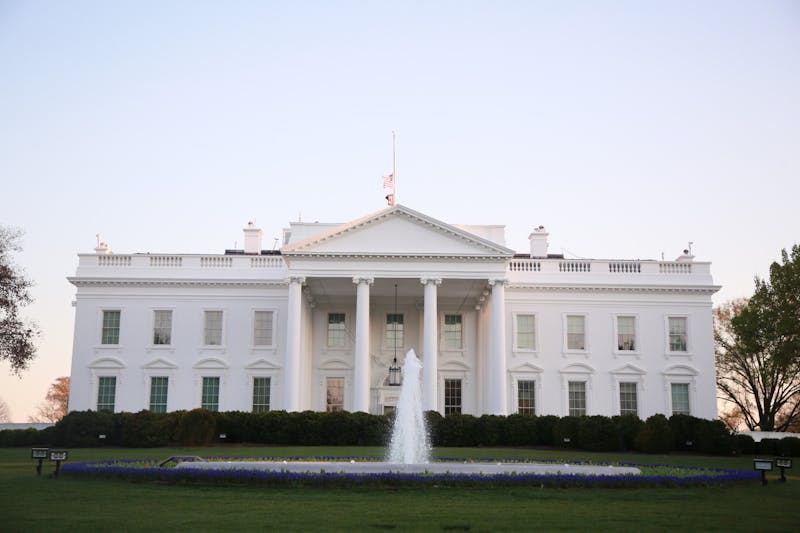
If you walk down Locust Walk, it’s hard to not to notice the barrage of flyers, lawn signs, and banners. Without fail, new ones appear almost every week, promoting the latest events, activities, or organizational initiatives. Unfortunately, a lot of these have one thing in common: they are not accessible.
Many signs feature QR codes that they urge passersby to scan in order to learn more about the promotion or register for an event. However, many of these are not accompanied by a URL, and QR codes require a mobile device to scan. While this may seem obvious, not everyone owns a mobile device, for a variety of reasons, ranging from choice, cost, to disability. Overall, 3% of American adults do not have any kind of cellphone; 15% do not have a smartphone. Only including a QR code without a URL excludes people without mobile devices.
This is not merely an occasional issue. In the past year, I have reached out to dozens of university departments and campus groups about their exclusive use of QR codes in promotional material posing an accessibility barrier. Most of them responded saying they had never thought about this and agreed to include URLs in their materials going forward. Yet, without fail, new signs sans URLs would show up, and the cycle would begin all over again.
This problem is alarmingly widespread at Penn today. It’s not hard to find an inaccessible sign nearby wherever you happen to be on campus. I’ve even seen flyers for student-led so-called “accessibility groups” that had only – get this – a QR code on them. To be clear, however, the problem is not isolated to student groups; it is one perpetuated by both student groups as well as the university itself.
There is currently a lack of understanding of digital accessibility standards amongst university staff and students. New in the last couple years, there is now a Web Accessibility group that oversees accessibility of digital content, and that team has been extremely helpful in addressing many accessibility issues with websites, emails, and more. Unfortunately, print material falls outside the scope of their charter. Much as the university has an extremely decentralized IT environment; there is no single group that offers guidance to other departments and business units on creating accessible print content.
Imposing rules on what people can print and post can be seen as infringing on people’s right to freedom of speech. However, I do believe Penn can and should enact regulations for university-affiliated material that explicitly prohibit the exclusive use of QR codes in any university signage or promotional material; something like the Web Accessibility group – but for print signage – is desperately needed today.
Such bureaucratic rules would and could not apply to student groups or anything outside of the university’s own business units, but it would raise awareness of the issue nonetheless. Accessibility is still everyone’s responsibility, and I urge anyone that creates material to post in public places to be aware of this and commit to creating inclusive and accessible material.
QR codes are a huge problem, but Penn’s campus has a culture that promotes exclusion in other subtle ways that most people never think about. Consider the many so-called “group chats” that rely on SMS text messaging or social media apps between participants; it may be easy to participate for most people, but not for those without mobile devices or who do not have social media. This preference against open, standardized technologies like email, URLs, and the World Wide Web may be convenient to some students, but it comes at the cost of excluding others. The choice of technologies used is not a neutral one.
This kind of one-sided thinking can also spill into the campus community through initiatives that affect everyone. A couple years ago, the Undergraduate Assembly proposed removing call boxes because “people can use their cell phones” – a thankfully failed initiative that would have dismantled a vital campus resource. Last year, somebody contemplated requiring mobile ordering to eat in the dining halls – an infeasible but nonetheless shocking idea.
Even though most people may feel these proposals would not make a difference to them, they are certainly not without impact, and as a community, we need to more thoughtfully consider the implications that such decisions would have on all people in the campus community and beyond, when students take what they learn into the public sphere after they graduate.
Accessibility may mean many things to different people: inclusivity, compliance with the ADA, or just general ease of access. While accessibility has improved in some areas, it is going to be an uphill battle for the foreseeable future, and the responsibility falls on all of us to promote accessibility in communication and call out access barriers where we see them. Together, we can make Penn a more accessible and inclusive campus for everyone, but it requires a conscious effort on everyone’s part to make sure the needle moves in the right direction.
NAVEEN ALBERT is an Engineering senior studying Computer Engineering. His email is naveen23@seas.upenn.edu
The Daily Pennsylvanian is an independent, student-run newspaper. Please consider making a donation to support the coverage that shapes the University. Your generosity ensures a future of strong journalism at Penn.
Donate






